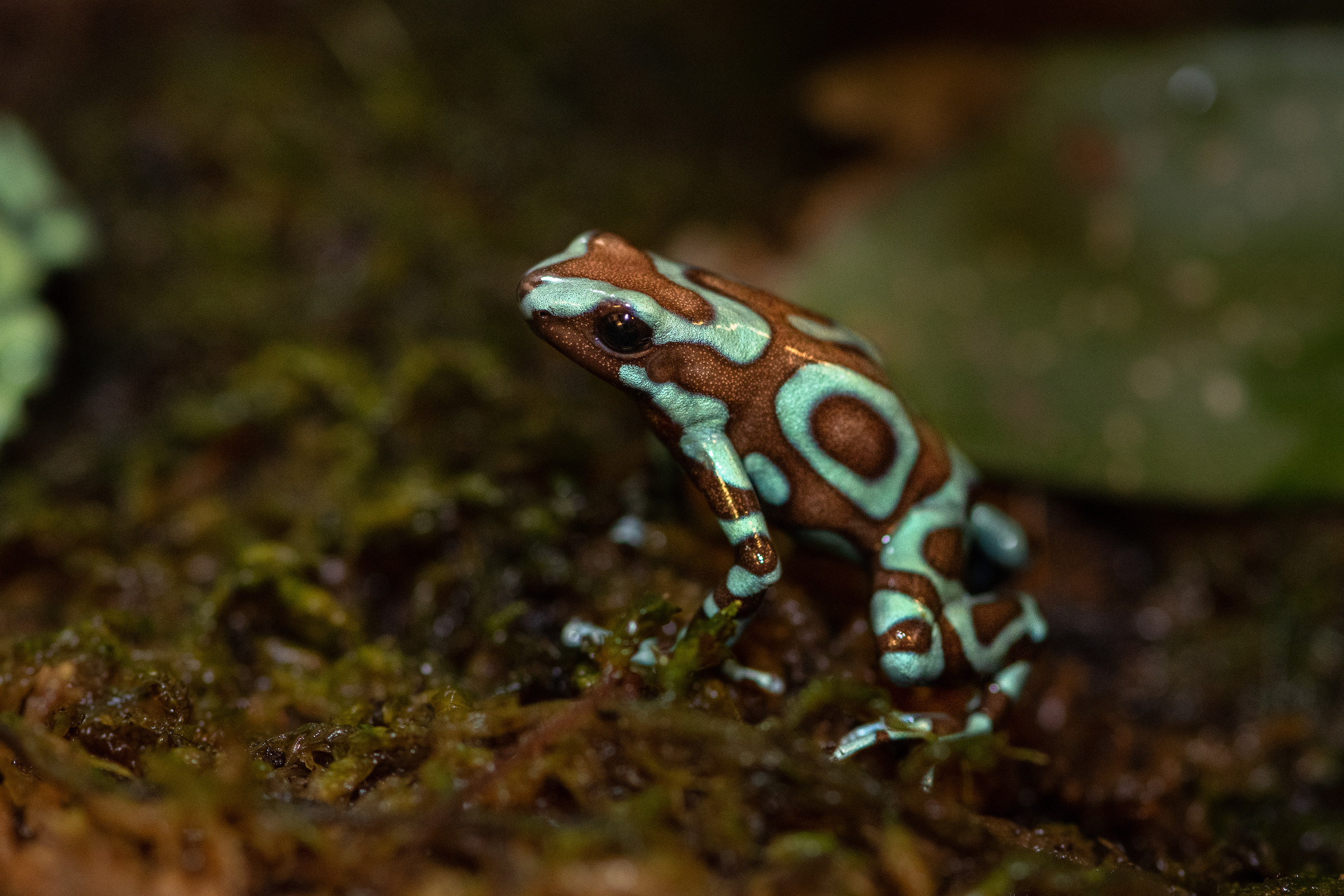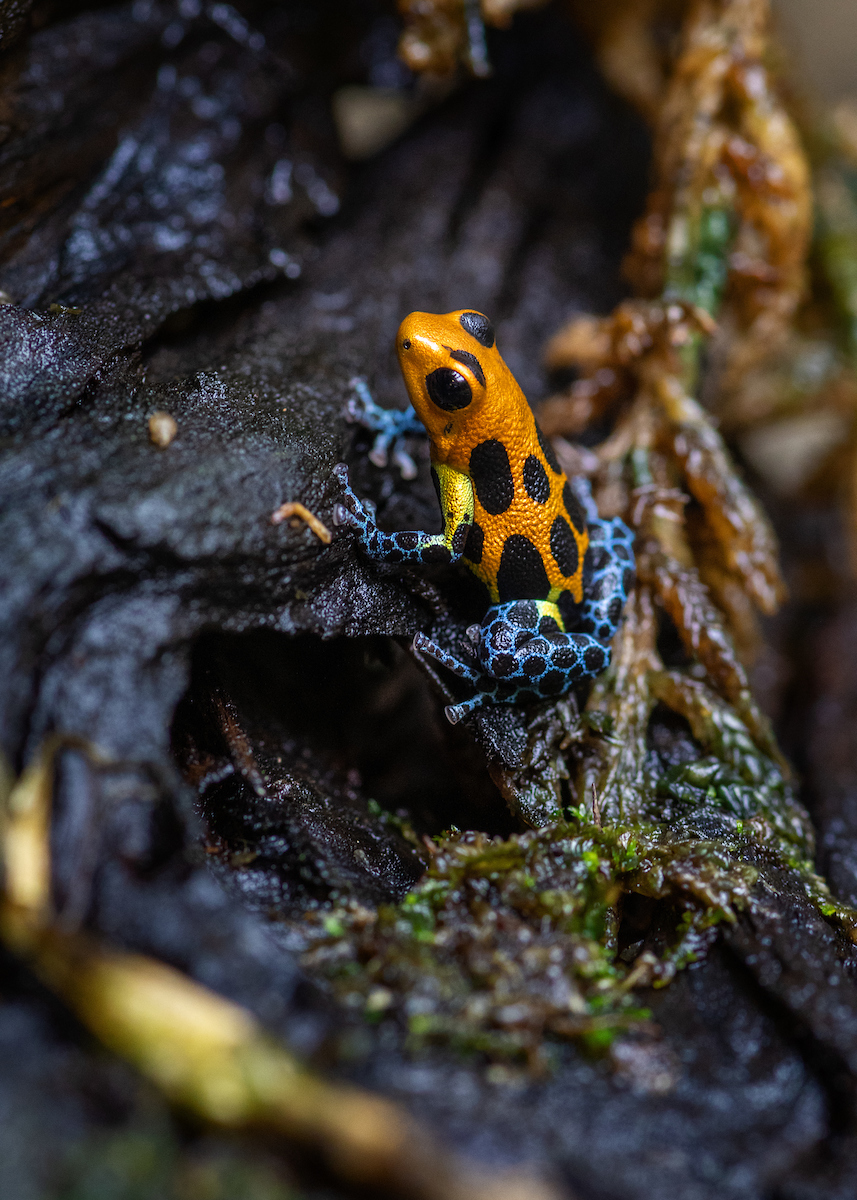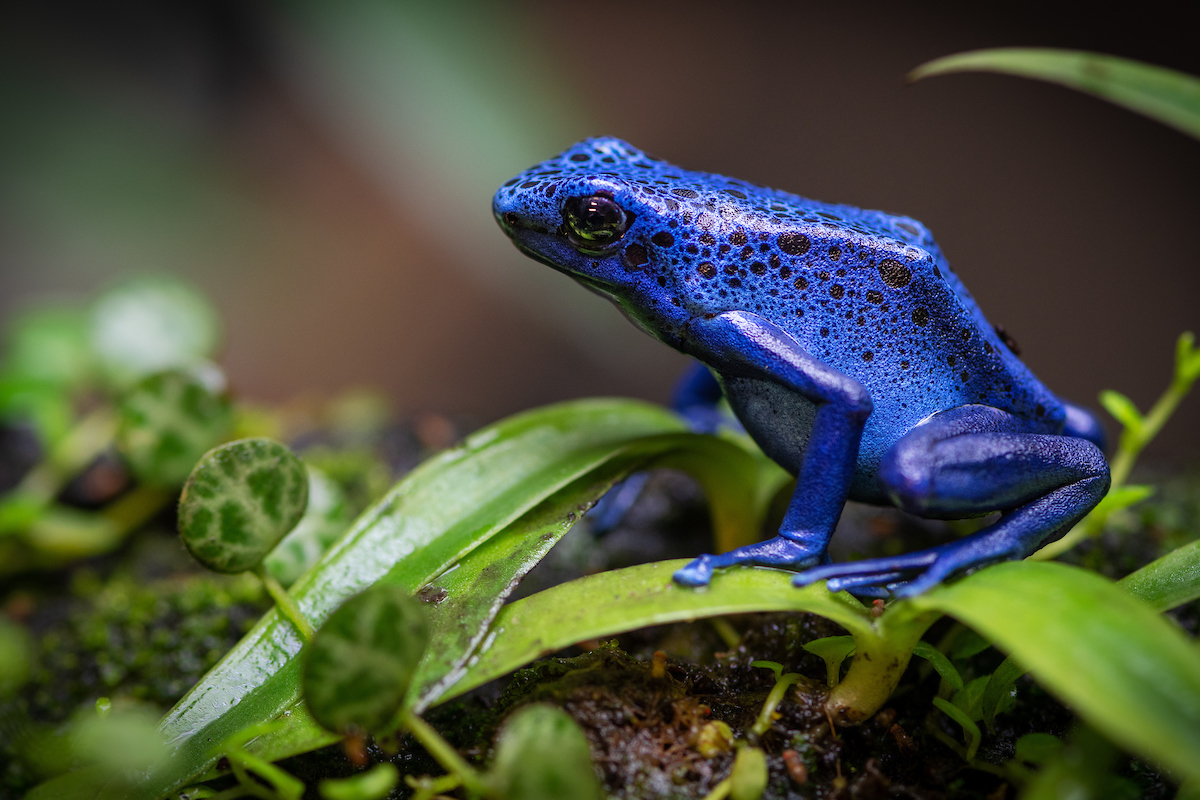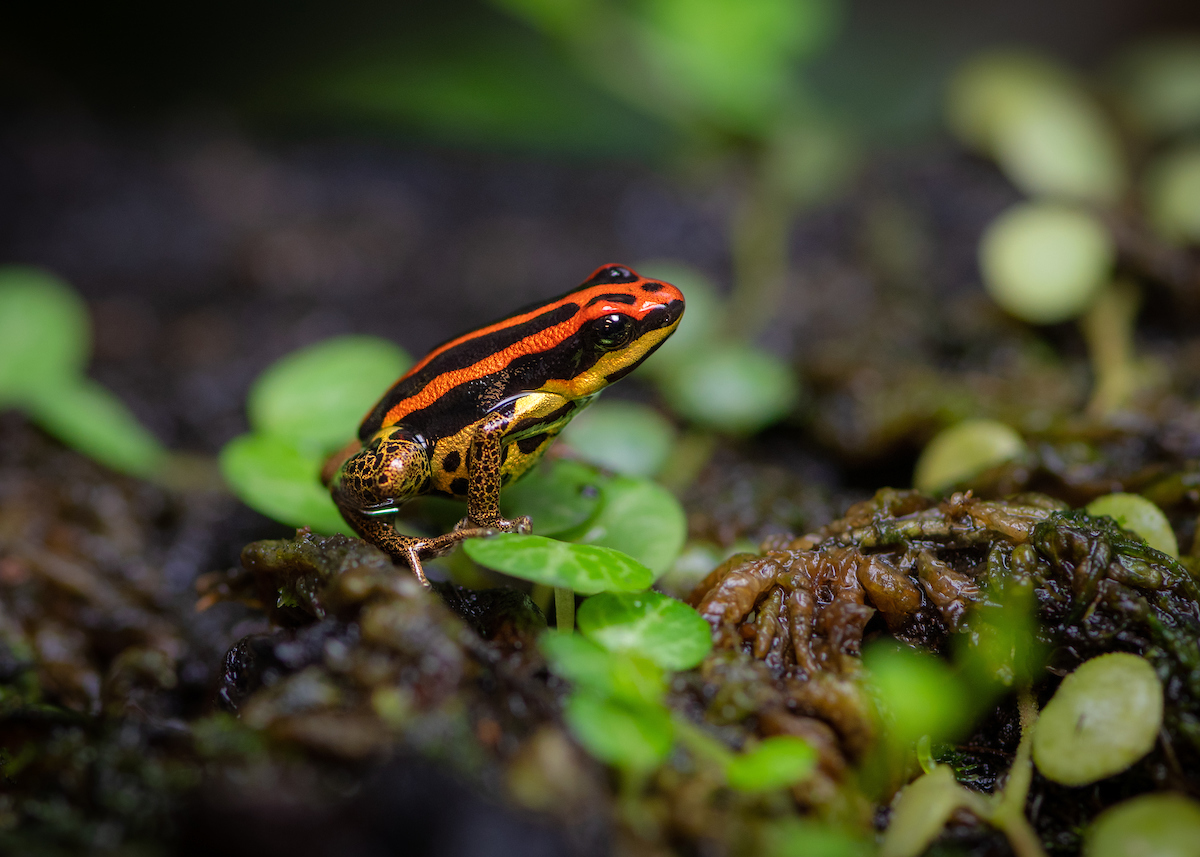About
Poison frogs may be small but they can be deadly. The toxins produced by some species are strong enough to stop a human heart. The poison from these frogs must be ingested, unlike the venom produced by snakes, which is injected by fangs. The source of the toxins is the frogs’ diet of ants, mites, termites, and spiders. These invertebrates contain small amounts of alkaloids that concentrate in the frogs’ bodies and are them secreted through their skin. Their bright pigmentation is a warning to predators that they are dangerous to eat—a phenomenon called “aposematic coloring.” These small amphibians are sometimes called poison dart frogs because indigenous peoples along the Amazon River use the toxic secretions from poison frogs to coat the blow gun darts that are used for hunting.
Poison frogs are attentive parents. Males carry newly hatched tadpoles on their backs to safer locations in small streams, ponds, or even tiny pools of water in the center of bromeliad plants high up in the canopy. Males typically protect the eggs to prevent them from drying out, and females visit the eggs frequently to deliver food that can include unfertilized eggs. In 10 to 18 days, the eggs hatch.
Jewels of the Jungle
The Los Angeles Zoo exhibits:
- blessed poison frog (Ranitomeya benedicta) from Peru
- dyeing poison frog/blue poison frog (Dendrobates tinctorius) from French Guiana, Surinam, and Guyana
- green-and-black poison arrow (dart) frog (Dendrobates auratus) from Costa Rica
- poison dart frog (Ranitomeya uakarii) from the Amazon basin in Peru, Colombia, and Brazil
- splash-back poison frog (Ranitomeya variabilis) from Peru
- yellow-headed poison frog/yellow-banded poison dart frog (Dendrobates leucomelas) from Venezuela, Guyana, Brazil, and Colombia
- golden poison frog (Phyllobates terribilis) from Colombia

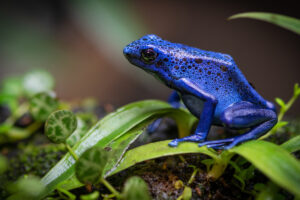


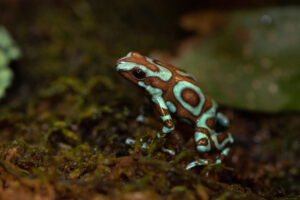
HABITAT
Poison frogs live in humid, tropical rainforests from southern Central America to northern South America.
DIET
These amphibians are carnivorous, eating many species of ants, termites, mites, and spiders. In human care, these frogs are not poisonous because their diet does not contain the alkaloids they consume in the wild.
PHYSICAL CHARACTERISTICS
Adult frogs range in length from 0.6 to 2.5 inches, depending on the genus and species. Their lifespan in the wild is unknown, but in human care they typically live between 12 and 20 years.
LOCATION WITHIN THE ZOO
You’ll find poison frogs in two locations: Rainforest of the Americas and the LAIR’s Damp Forest section. See Zoo Map.

